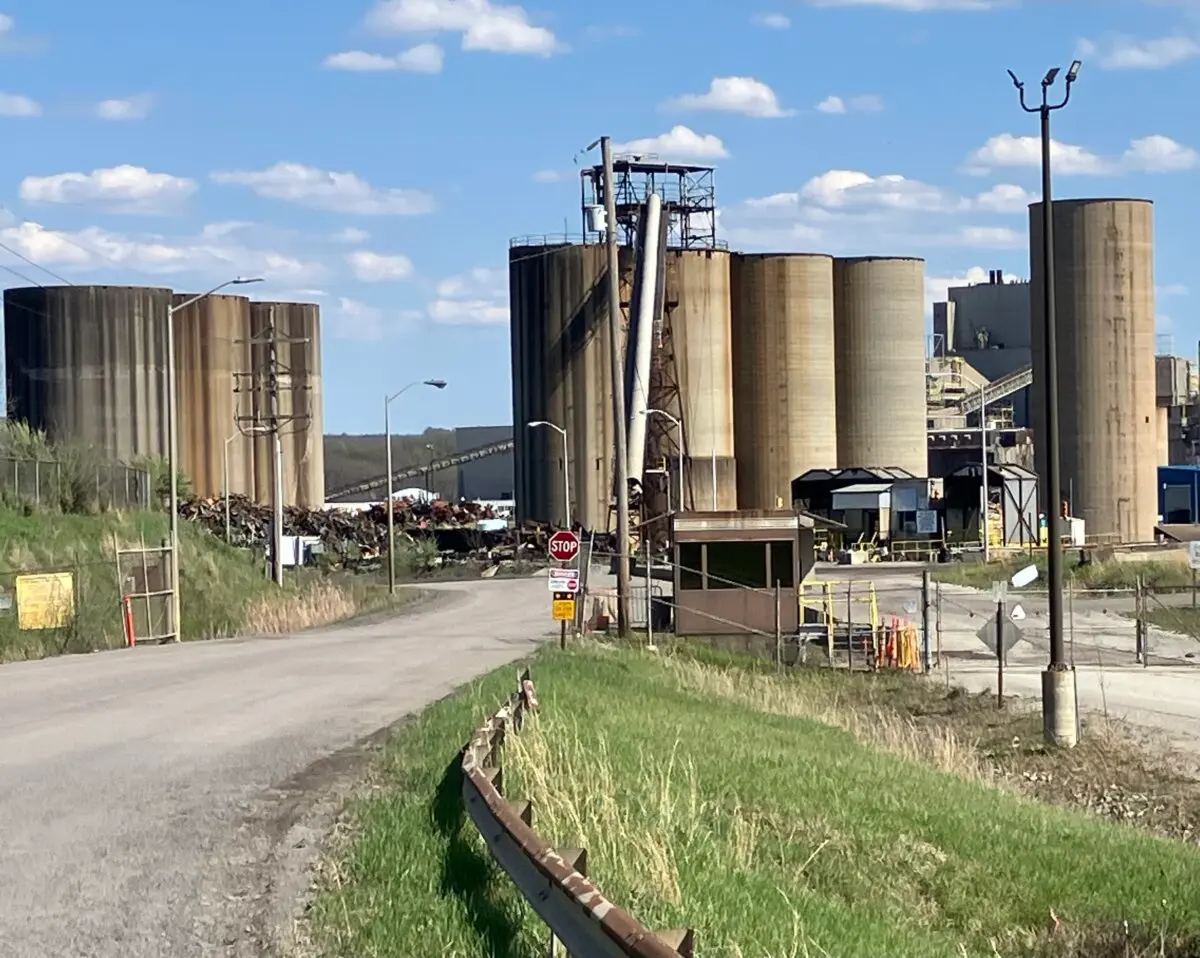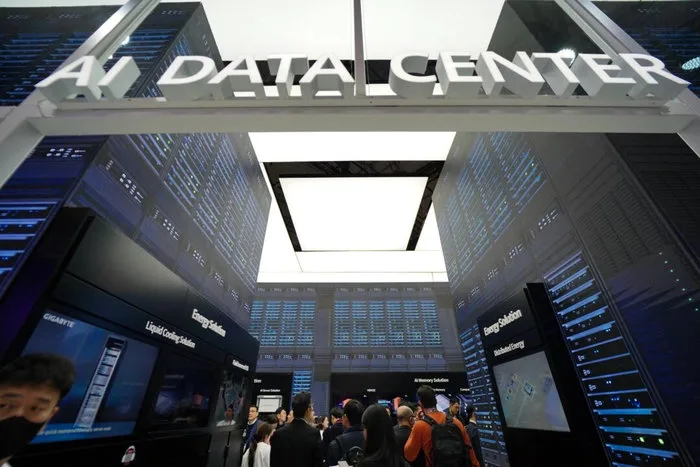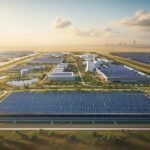By John Haughey
Artificial intelligence data center developers are taking advantage of Trump administration inducements to go “behind-the-meter” and build their own power plants, or co-locate adjacent to existing commercial electricity generators to cut transmission costs, short-circuit lengthy permitting requirements, and get projects online faster.
During an Oct. 21 Rose Garden Luncheon with Senate Republicans at the White House, President Donald Trump praised “first-mover” developers for advancing self-powered projects that will be key to the nation’s drive to maintain cutting-edge supremacy in artificial intelligence, quantum computing, and fission-fusion energy commercialization.
“We have an old grid. It’s a tired grid. It doesn’t have the juice that you need to fire-up these plants,” Trump said, noting that China “is building, right now, 52 power stations” and expanding its grid faster than the United States.
According to the National Manufacturers Association, China is investing twice as much in its capacity to produce electricity than utilities in the United States are.
China increased its power generation capacity by approximately 429 gigawatts in 2024, while the United States added about 65 gigawatts, according to Rand Corporation, which estimates that the United States must add 80-90 gigawatts a year in new generation plants to keep pace with demand.
“These plants will need more than double the energy we have right now for the whole country,” Trump said. “That’s how big it is. And we can’t do that.”
The president explained, “There’s no way we can do that” under standard electric grid expansion regulations that can often take years to garner local, state, and federal approvals.
“But I did something better,” he said, “letting everybody build their own power plant, so they’ll become like an electric utility in addition to AI.”
Since returning to office in January 2025, the president has promoted the “co-location” of new energy sources and data centers to accelerate the build-out of AI infrastructure with initiatives that fast-track permits, reduce regulatory hurdles, and quickly make federal land available for these projects.
Trump issued a July executive order that streamlines permitting for data center projects, provided they produce least 100 megawatts of dedicated new electricity load for AI inference, training, simulation, or synthetic data generation with at least $500 million in committed private capital investment—especially if they generate their own “behind-the-meter” electricity that could become a generative source for nearby utilities.

Getting Around Gridlock
Several data center developers have unveiled self-powered projects within the last few months, with others planning to do so in the coming years.
Among them is Stargate, the massive $500 billion data center campus near Abilene, Texas, being built by SoftBank, OpenAI, Oracle, and MGX. It is set to be operational by 2029, with its own 360-megawatt natural gas plant that could be expanded to produce more than 1.2 gigawatts of power.
Elon Musk’s xAI is building a 785,000-square-foot “Colossus” data center in Memphis, Tennessee, and is using natural gas turbines in a refitted furniture factory to power what it says will “become one of the world’s largest AI supercomputers.”
Meta has agreed to build a data center on the site of a planned 400 megawatt natural gas plant in New Albany, Ohio, and Google has partnered with Intersect Power to build co-located data centers in “energy parks” alongside solar and storage generation in a nationwide $20 billion venture.
Amazon, Google, and Microsoft are also heavily investing in Small Modular Reactors (SMRs) that use nuclear fission for AI data centers. The first commercial SMRs, which can be mass produced, are on the cusp of being deployed.
Among the most ambitious of these projects is the planned 12 SMR Cascade Advanced Energy Facility near Richland, Washington, to be built by Energy Northwest and Amazon.
The 960 megawatt plant will power AI data centers “with operations targeted to start in the 2030s,” Amazon said in an Oct. 16 announcement.
So while the United States’ de-centralized, complex grid—managed by 3,000 electric utilities, regional transmission operators, local and state governments—may not be able to pace the Chinese Communist Party’s centralized, subsidized expansion of China’s grid, American corporations and entrepreneurs are proving they can.
Florida- and Denmark-based Data Center Map documents there are 4,098 data centers operating in the United States, including 643 in Virginia, 395 in Texas, and 320 in California. There are 379 data centers in 63 markets in China, Data Center Maps charts.
Definitions vary on what qualifies as a “data center” and some estimate there are more than 6,000 in the United States and thousands more than 379 in China, but the trend is clear. The private sector is answering the president’s call to advance AI, quantum computing, cryptocurrencies, and spur technological breakthroughs in energy development.
“We’re dominating China right now in AI,” Trump said. “We have to get them fast, and we’re getting them fast, so we’re leading China in the AI race by a lot.”






